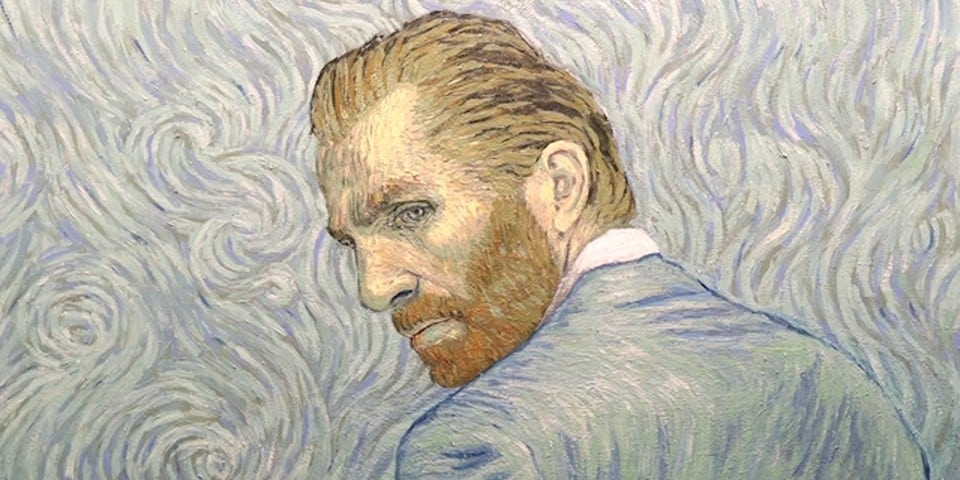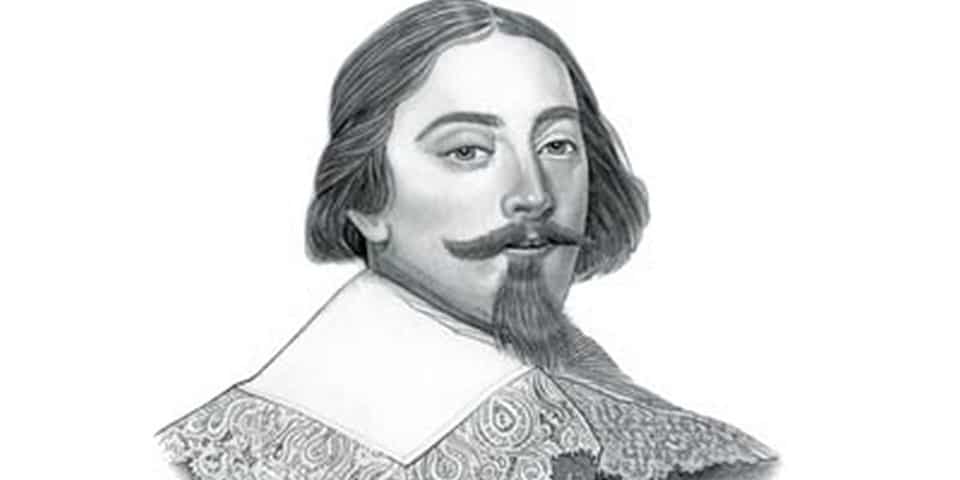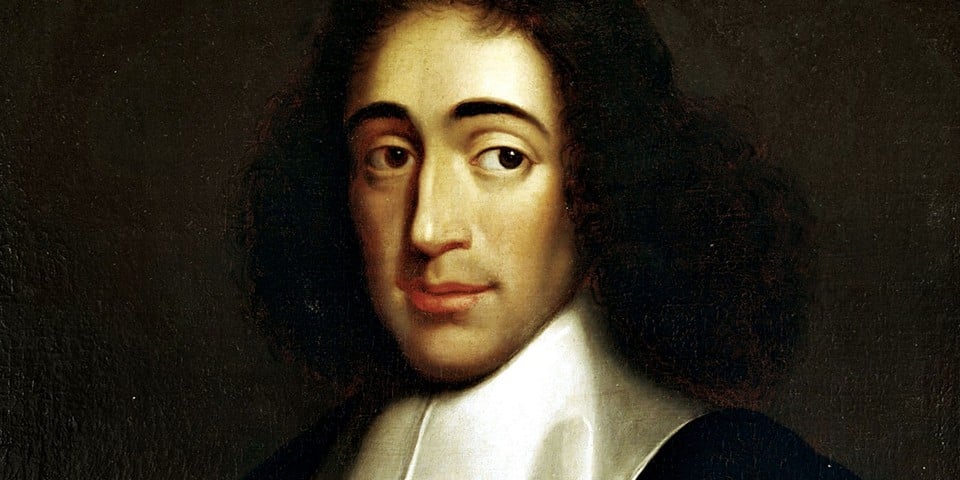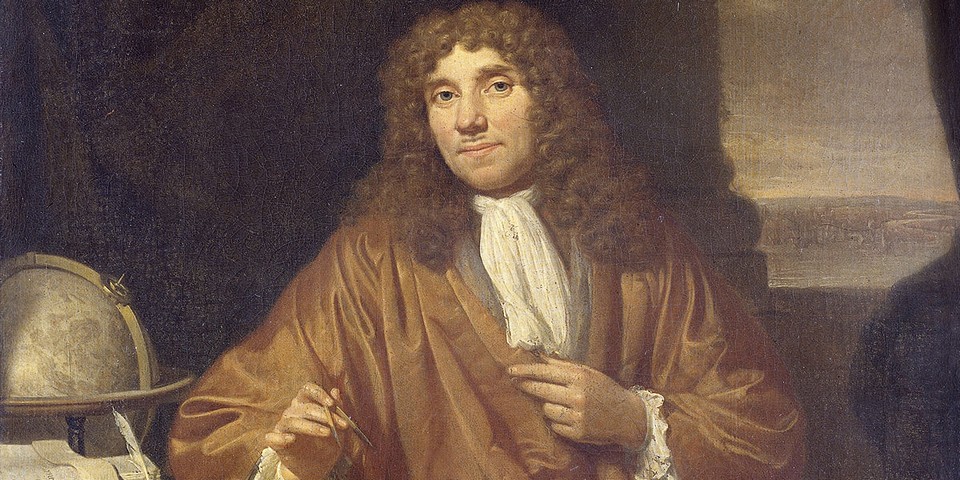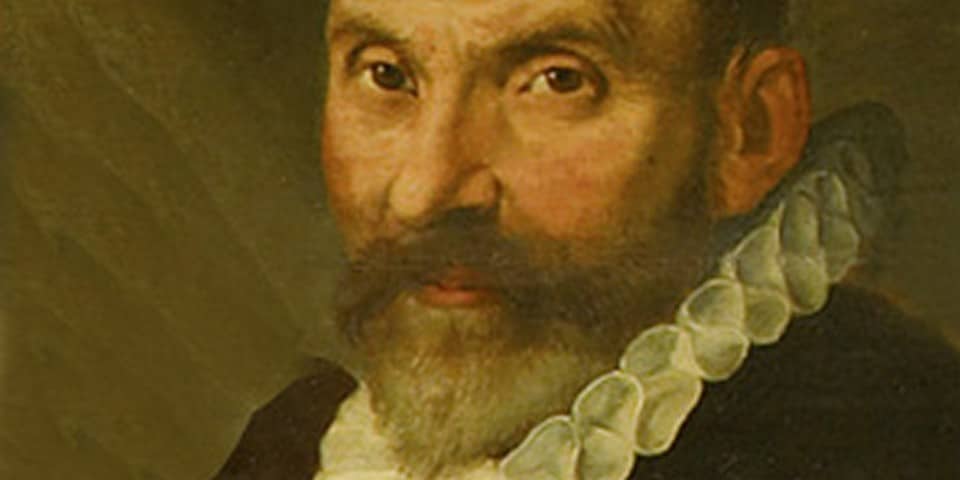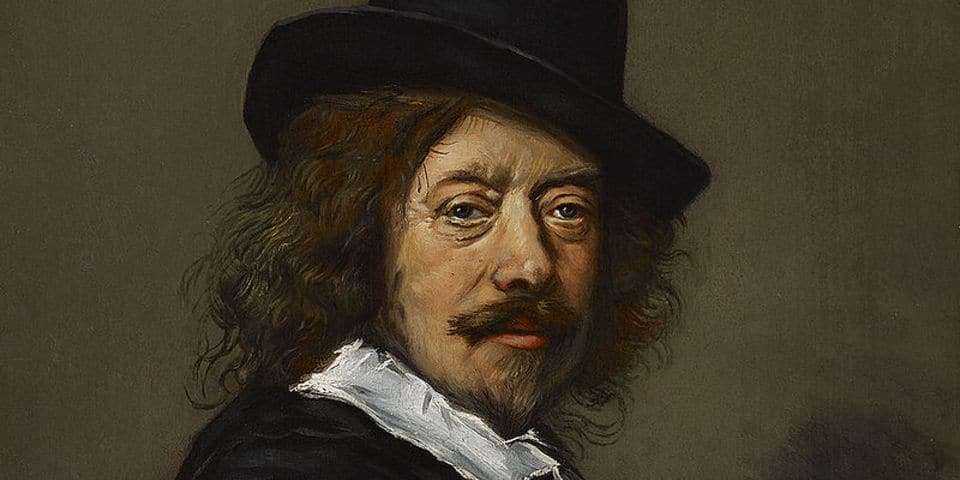Vincent Willem van Gogh (Vincent Willem van Gogh) is a Dutch artist who laid the foundations for the direction of post-impressionism, in many ways determined the principles of creativity of modern masters.
- Short biography
- Business
- Teachers and religion
- The first steps
- Early work
- Paris period
- Flourishing and finding your own style
- Paintings
- Potato eaters
- Red vineyards in Arles
- Night cafe
- Sunflowers
- Starlight Night
- Self-portrait with cut off ear and pipe
- Blooming almond branches
- Portrait of Dr. Gachet
- Wheat field with crows
- Museum
- Quotes
Short biography
Van Gogh was born on March 30, 1853 in the village of Groot Zundert in the province of Noord-Brabant, bordering Belgium.
Father Theodore Van Gogh is a Protestant clergyman. Mother Anna Cornelia Carbentus - from the family of a respected bookseller and bookbinder from the city Hague (Den Haag).
Vincent was the 2nd child, but his brother died immediately after birth, so the boy turned out to be the eldest, and after him five more children were born in the family:
- Theodorus (Theo) (Theodorus, Theo);
- Cornelis (Cor);
- Anna Cornelia;
- Elizabeth (Liz);
- Willamina, Vil.
The baby was named after his grandfather, a Protestant minister. The first child was supposed to bear this name, but due to his early death, Vincent got it.
Memories of loved ones paint Vincent's character as very strange, capricious and wayward, disobedient and capable of unexpected antics. Outside of home and family, he was brought up, quiet, polite, modest, kind, distinguished by an amazing intelligent look and a heart full of sympathy. However, he avoided peers and was not included in their games and fun.
At the age of 7, his father and mother enrolled him in school, but a year later he and his sister Anna were transferred to home schooling, and a governess was engaged with the children.
At the age of 11, in 1864, Vincent was assigned to a school in Zevenbergen. Although it was only 20 km from his native place, the child could hardly bear the separation, and these experiences were remembered forever.
In 1866, Vincent was assigned a student at the College Willem II in Tilburg. The teenager made great strides in mastering foreign languages, spoke and read fluently French, English, German. Teachers also noted Vincent's ability to draw. However, in 1868 he suddenly dropped out of school and returned home. They did not send him to educational institutions anymore, he continued to receive his education at home. Memories of the famous artist about the beginning of life were sad, childhood was associated with darkness, coldness and emptiness.
Business
In 1869, in The Hague, Vincent was recruited by his uncle, who bore the same name, whom the future artist called "Uncle Saint". Uncle was the owner of the department of the company Goupil & Cie, which was engaged in the examination, assessment and sale of art objects. Vincent acquires the profession of a dealer and makes significant progress, so in 1873 he was sent to work in London.
Working with works of art was very interesting to Vincent, he learned to understand the fine arts, became a regular visitor to museums and exhibition halls. His favorite authors were Jean-François Millet and Jules Breton.
The story of Vincent's first love belongs to the same period. But the story was incomprehensible and confusing: he lived in a rented apartment with Ursula Loyer and her daughter Eugene; biographers argue about who was the object of love: one of them or Carolina Haanebeek. But whoever the beloved was, Vincent was refused and lost interest in life, work, art. He begins to read the Bible thoughtfully. During this period, in 1874, he had to transfer to the Paris branch of the company. There he again becomes a frequenter of museums and is fond of creating drawings. Hating the dealer's activities, he ceases to generate income for the company, and he was fired in 1876.
Teachers and religion
In March 1876, Vincent moved to Great Britain, entered a free-of-charge teacher at a school in Ramsgate. At the same time, he is thinking about a career as a clergyman. In July 1876, he transferred to the school in Isleworth, where he additionally assisted the priest. In November 1876, Vincent reads a sermon and is convinced of the mission to carry the truth of religious teaching.
In 1876, Vincent came to his home for the Christmas holidays, and his mother and father begged him not to leave. Vincent got a job in a bookstore in Dordrecht, but he does not like the trade, he devotes all his time to translating biblical texts and painting.
Father and mother, rejoicing in his desire for religious service, send Vincent to Amsterdam, where, with the help of a relative, Johaness Stricker, he is trained in theology for admission to the university, and lives with his uncle, Jan Van Gogh. Gogh), who had the rank of admiral.
After admission, Van Gogh was a student of theology until July 1878, after which, disappointed, he refused further studies and fled Amsterdam.
The next phase of the quest was associated with the Protestant missionary school in the city of Laken near Brussels. The school was led by Pastor Bokma. Vincent has been gaining experience in preparing and preaching sermons for three months, but he also leaves this place. The biographers' information is contradictory: either he quit his job himself, or was fired due to carelessness in his clothes and unbalanced behavior.
In December 1878, Vincent continued his missionary service, but now in the southern region of Belgium, in the village of Paturi. Mining families lived in the village, Van Gogh disinterestedly worked with children, visited houses and talked about the Bible, looked after the sick. To feed himself, he drew maps of the Holy Land and sold them. Van Gogh showed himself as an ascetic, sincere and tireless, as a result he was assigned a small salary from the Evangelical Society. He planned to enter the Gospel school, but education was paid, and this, according to Van Gogh, is incompatible with true faith, which cannot be associated with money. At the same time, he submits a request to the management of the mines to improve the working conditions of the miners. He was refused, deprived of the right to preach, which shocked him and led to another disappointment.
The first steps
Van Gogh finds solace at the easel, in 1880 he decides to try himself at the Brussels Royal Academy of Arts. He is supported by his brother Theo, but a year later, training is abandoned again, and the eldest son returns under the parental roof. He is absorbed in self-education, works tirelessly.
He feels love for his widowed cousin Kee Vos-Stricker, who raised her son and came to visit the family. Van Gogh is rejected, but persists, and he is kicked out of his father's house. These events shocked the young man, he flees to The Hague, immerses himself in creativity, takes lessons from Anton Mauve, comprehends the laws of fine art, makes copies of lithographic works.
Van Gogh spends a lot of time in neighborhoods inhabited by the poor. The works of this period are sketches of courtyards, roofs, alleys:
- "Backyards" (De achtertuin) (1882);
- “Roofs. View from the workshop of Van Gogh "(Dak. Het uitzicht vanuit de Studio van Gogh) (1882).
An interesting technique combines watercolors, sepia, ink, chalk, etc.
In The Hague, he chooses to wife a woman of easy virtue named Christine (Van Christina), which he picked up right on the panel. Khristin moved to Van Gogh with her children, became a model for the artist, but she had a terrible character, and they had to leave. This episode leads to a final break with parents and loved ones.
After breaking up with Christine, Vincent leaves for Drenth, in the countryside. During this period, the artist's landscape works, as well as paintings, which depict the life of the peasantry, appear.
Early work
The period of creativity, representing the first works executed in Drenthe, is notable for realism, but they express the key characteristics of the artist's individual manner. Many critics believe that these features are due to the lack of elementary art education: Van Gogh did not know the laws of depicting a person, therefore, the characters in the paintings and sketches seem to be angular, illiterate, as if they came out of the bosom of nature, like rocks, on which the vault of heaven presses:
- "Red Vineyards" (Rode wijngaard) (1888);
- Peasant Woman (Boerin) (1885);
- "Eaters of potatoes" (De Aardappeleters) (1885);
- "The old church tower in Nuenen" (De Oude Begraafplaats Toren in Nuenen) (1885) and others.
These works are distinguished by a dark palette of shades that convey the painful atmosphere of the surrounding life, the painful situation of ordinary people, sympathy, pain and drama of the author.
In 1885, he was forced to leave Drenthe, as he displeased the priest, who considered drawing to be debauchery and forbade local residents to pose for paintings.
Paris period
Van Gogh travels to Antwerpen, takes lessons at the Academy of Arts and additionally at a private educational institution, where he works a lot on the depiction of nudity.
In 1886, Vincent moved to Paris to Theo, who worked in a dealership specializing in the sale of art objects.
In Paris in 1887/88, Van Gogh takes lessons at a private school, comprehends the basics of Japanese art, the basics of the impressionistic manner of writing, the work of Paul Gauguin (Pol Gogen). This stage in the creative biography of Vag Gog is called light, in the works the leitmotif is light blue, bright yellow, fiery shades, the manner of writing is light, betraying movement, the "stream" of life:
- Agostina Segatori in het Café Tamboerijn;
- "Bridge over the Seine" (Brug over de Seine);
- Papa Tanguy and others.
Van Gogh admired the Impressionists, got acquainted with celebrities thanks to his brother Theo:
- Edgar Degas
- Camille Pissarro
- Henri Tuluz-Lautrec;
- Paul Gauguin;
- Emile Bernard and others.
Van Gogh found himself among good friends and like-minded people, got involved in the preparation of expositions, which were organized in restaurants, bars, theater halls. The audience did not appreciate Van Gogh, they recognized them as terrible, but he immerses himself in learning and self-improvement, comprehends the theoretical basis of the color technique.
In Paris, Van Gogh created about 230 works: still lifes, portrait and landscape painting, cycles of paintings (for example, the series "Shoes" in 1887) (Schoenen).
It is interesting that the person on the canvas acquires a secondary role, and the main thing is the light world of nature, its lightness, richness of colors, and their subtlest transitions. Van Gogh discovers the newest trend - post-impressionism.
Flourishing and finding your own style
In 1888, Van Gogh, worried about the misunderstanding of the audience, left for the southern French city of Arles. Arles became the city in which Vincent understood the purpose of his work: not strive to reflect the real visible world, but with the help of color and simple techniques to express your inner "I".
He decides to break with the Impressionists, but the peculiarities of their style have been manifested for many years in his works, in the ways of depicting light and air, in the manner of placing color accents. Typical for Impressionist works are a series of canvases in which the same landscape, but at different times of the day and under different lighting conditions.
The attractiveness of the style of Van Gogh's works of the heyday is in the contradiction between the desire for a harmonious outlook and the realization of one's own helplessness in front of a disharmonious world. The works of 1888, full of light and festive nature, coexist with gloomy phantasmagoric images:
- "Yellow House" (Gele huis);
- "Armchair of Gauguin" (De stoel van Gauguin);
- "Cafe terrace at night" (Cafe terras bij nacht).
The dynamism, movement of color, the energy of the master's brush is a reflection of the artist's soul, his tragic searches, impulses to understand the surrounding world of the living and inanimate:
- "Red Vineyards in Arles";
- The Sower (Zaaier);
- "Night cafe" (Nachtkoffie).
The artist plans to establish a society uniting novice geniuses who will reflect the future of mankind. To open society, Vincent is helped by Theo's funds. Van Gogh assigned the leading role to Paul Gauguin. When Gauguin arrived, they quarreled to the point that Van Gogh nearly cut his throat on December 23, 1888. Gauguin managed to escape, and Van Gogh, repenting, cut off part of his own earlobe.
Biographers assess this episode differently, many believe that this act was a sign of insanity, provoked by excessive consumption of alcoholic beverages. Van Gogh was sent to a mental hospital, where he is kept in strict conditions in a ward for the violent. Gauguin leaves, Theo takes care of Vincent. After a course of treatment, Vincent dreams of returning to Arles. But the residents of the city protested, and the artist was offered to settle near the Saint-Paul hospital in Saint-Rémy-de-Provence, near Arles.
Since May 1889, Van Gogh has been living in Saint-Remy, during the year he writes more than 150 large pieces and about 100 drawings and watercolors, demonstrating his mastery of halftones and contrast techniques. Among them, the landscape genre prevails, still lifes that convey the mood, contradictions in the author's soul:
- Nightlights;
- Landscape with Olive Trees (Landschap met olijfbomen) and others.
In 1889, the fruits of Van Gogh's work were exhibited in Brussels, met with rave reviews from colleagues and critics. But Van Gogh does not feel joy from the finally come recognition, he moves to Auvers-sur-Oise, where his brother lives with his family. There he constantly creates, but the depressed mood and nervous excitement of the author are transmitted to the canvases of 1890, they are distinguished by broken lines, distorted silhouettes of objects and faces:
- “Village road with cypress trees” (Landelijke weg met cipressen);
- "Landscape at Auvers after the rain" (Landschap in Auvers na de regen);
- "Wheat field with crows" (Korenveld met kraaien) and others.
On July 27, 1890, Van Gogh was fatally wounded from a pistol. It is not known whether the shot was planned or accidental, but the artist died a day later. In the same town he was buried, and after 6 months his brother Theo died of nervous exhaustion, whose grave is next to Vincent.
Over 10 years of creativity, more than 2,100 works have appeared, of which about 860 are made in oils. Van Gogh became the founder of Expressionism, Post-Impressionism, his principles formed the basis of Fauvism and Modernism.
A series of triumphal exhibition events took place posthumously in Paris, Brussels, The Hague, Antwerp. At the beginning of the 20th century, another wave of shows of the famous Dutchman's works took place in Paris, Cologne (Keulen), New York (New York), Berlin (Berlijn).
Paintings
It is not known exactly how many paintings Van Gogh wrote, but art critics and researchers of his work tend to figure about 800. In the last 70 days of his life alone, he painted 70 paintings - one a day! Let's remember the most famous paintings with names and descriptions:
Potato eaters
The Potato Eaters appeared in Nuenen in 1885. The author described the task in a letter to Theo: he sought to show people of hard work who received little remuneration for their work. The hands that cultivate the field receive its gifts.
Red vineyards in Arles
The famous painting dates back to 1888. The plot of the picture is not fictional, Vincent tells about it in one of the messages to Theo. On the canvas, the artist conveys the rich colors that amazed him: deep red grape leaves, a piercing green sky, a bright purple road washed by the dog with golden reflections from the rays of the setting sun. The colors seem to flow into one another, convey the author's anxious mood, his tension, the depth of philosophical thoughts about the world. Such a plot will be repeated in the work of Van Gogh, symbolizing the eternally renewed life in work.
Night cafe
The Night Cafe appeared in Arles and presented the author's thoughts about a man who destroys his own life on his own. The idea of self-destruction and steady movement towards madness is expressed by the contrast of blood-burgundy and green colors. To try to penetrate the secrets of twilight life, the author worked on the painting at night. The expressionistic manner of writing conveys the fullness of passions, anxiety, and the painfulness of life.
Sunflowers
In the legacy of Van Gogh, there are two series of works depicting sunflowers. In the first cycle - flowers laid out on the table, they were painted in the Parisian period in 1887 and were soon acquired by Gauguin. The second series appeared in 1888/89 in Arles, on each canvas - sunflower flowers in a vase.
This flower symbolizes love and fidelity, friendship and warmth of human relationships, good deeds and gratitude. The artist expresses the depths of his understanding of the world in sunflowers, associating himself with this sunny flower.
Starlight Night
Starry Night was created in 1889 in Saint-Remy, it depicts the stars and the moon in dynamics framed by the boundless sky, eternally existing and rushing into the infinity of the Universe. The cypresses in the foreground strive to reach the stars, and the village in the valley is static, motionless and devoid of aspirations for the new and infinite. Expression of color approaches and the use of different types of strokes conveys the multidimensionality of space, its variability and depth.
Self-portrait with cut off ear and pipe
This famous self-portrait was taken in Arles in January 1889. An interesting feature is the dialogue of red-orange and blue-violet colors, against the background of which there is a plunge into the abyss of a distorted human consciousness. Attention rivets the face and eyes, as if looking deep into the personality. Self-portraits are the artist's conversation with himself and with the universe.
Blooming almond branches
"Blossoming almond branches" (Amandelbloesem) are created in Saint-Remy in 1890. The spring flowering of almond trees is a symbol of renewal, emerging and growing life. The unusualness of the canvas is that the branches soar without a foundation under them, they are self-sufficient and beautiful.
Portrait of Dr. Gachet
This portrait was painted in 1890. Bright colors convey the significance of every moment, brushwork creates a dynamic image of man and nature, which are inextricably linked. The image of the hero of the picture is painful and nervous: we are gazing at the image of a sad old man, immersed in his thoughts, as if he has absorbed the painful experience of years.
Wheat field with crows
"Wheat Field with Crows" was created in July 1890 and expresses the feeling of approaching death, the hopeless tragedy of life. The picture is filled with symbolism: the sky before a thunderstorm, approaching black birds, roads leading into the unknown, but inaccessible.
Museum
Vincent Van Gogh Museum (Van Gogh Museum) opened in Amsterdam in 1973 and presents not only the most fundamental collection of his creations, but also the work of the Impressionists. This is the first most popular exhibition center in the Netherlands.
Quotes
- Among the clergy, as well as among the masters of the brush, despotic academism reigns, dull and full of prejudices;
- Thinking about future hardships and hardships, I could not create;
- Painting is my joy and comfort, giving an opportunity to escape from the troubles of life;
- I want to express in my paintings everything that is hidden in the heart of an insignificant person.
